WATERVILLE — When the winter sun sets, the sky over certain areas of the city darkens with swarms of hundreds upon hundreds of crows, gathering together for their nightly roost.
Huge flocks, thousands of crows at a time, collect together in tree stands and on utility poles. From afar, a casual observer could be excused for mistaking the dark bodies for dead leaves or clumps of sticks lodged in the branches.
But then there’s also a cacophony of cawing and frequently the clatter of hundreds of sets of wings settling into branches, and those exposed to it may feel as though they’ve been dropped into a scene from Alfred Hitchcock’s movie “The Birds.”
“It is an amazing phenomenon,” said Kevin McGowan, a crow expert with the Cornell Lab of Ornithology at Cornell University.
Starting in late autumn, groups of crows start to gather for a winter roost. Those numbers gradually swell as crows migrating from farther north add to their numbers until huge groups come together.
The roosts start to break up around this time of year — mid-to-late March — as the birds move away to get ready for mating season.
Waterville city officials haven’t had many complaints from people about the birds, although city workers did have to pressure-wash the sidewalk and benches in Castonguay Square this week after crows left droppings all over the property, City Manager Mike Roy said.
The crows also are known to swoop down onto trash left on the curb, pecking through the plastic and strewing garbage on lawns and sidewalks.
Herb Wilson, a biology professor at Colby College in Waterville, said there hasn’t been a count of the Waterville roost, but it could number as many as 10,000 birds. Roosts in other parts of the country easily reach 50,000 birds, and the largest roost recorded was 2 million.
The group that roosts in the Waterville area typically stays near the city’s north side — around Elm Plaza, Industrial Road, Colby College and Quarry Road — while venturing down the Main Street and Kennebec River corridors, sometimes encircling the downtown.
According to McGowan, the birds don’t stay in the same place every night, but they do stay in the same general area. Some crow populations use the same roosts for years at a time.
On winter evenings, it is common to see waves of hundreds of crows in flight, heading back from their foraging territory as far as 25 miles away to the safety of the communal roost. As the sun goes down, crows group themselves in larger and larger assortments before finally coming together. In the morning, the pattern is reversed.
Scientists think the primary reason crows group together like that is because of the threat from great horned owls, the birds’ biggest predator next to humans.
“That’s kind of the default explanation for why you have birds flocking together,” said Doug Hitchcox, a staff naturalist for Maine Audubon. “The more eyes looking, the more higher the detection rate for predators is going to be.”
Aside from Waterville, large groups of crows are typically found in Brewer and Portland, but roosts are common throughout Maine. Plenty of other bird species flock together for night roosts, but crows are noteworthy because they are so large, Hitchcox said.
“When you see thousands of large birds, you tend to take notice,” he said.
Crows are territorial and probably aren’t sharing the location of their food sources, especially if there isn’t much there, with their roost mates, he said. Even so, a hungry crow might notice some others headed in a particular direction away from its typical scavenging grounds and decide to try its luck in that direction, he added.
“Crows are always watching other crows, because they are looking for food,” McGowan said.
“If you’re hungry and didn’t get any food that day and you see a bird leaving to the northeast, you might follow that bird,” he explained.
Year-round, crows live in small family groups centered around a mating pair and chicks from years past. Crows don’t start mating until they are 2 years old, so family groups can be as large as 15 birds.
The threat from predators such as great horned owls doesn’t go away the rest of the year, but crows have other priorities — breeding, protecting their eggs and chicks from predators and their mate from other crows, said Wilson, the Colby biology professor. When leaves are back on the trees, crows also might have a little extra seclusion and protection from predators, he said.
Crow roosts aren’t a new development, but changes in the bird’s habitat have brought the behavior to people’s attention.
“Crows have been doing this for as long as there have been crows, but in the last 30 years, they have become less secretive about it,” McGowan said.
Now, instead of roosting in a stand of woods, crows have gravitated to urban areas, where there is an easy availability of food, in the form of trash, scraps and other scavenging materials. But crows also might find urban areas safer than more rural places, McGowan said. Crows appear to like well-lit areas, for example, leading him to describe urban areas as a “night-light” for the birds.
But that change in roosting habitat also has brought crows into conflict with humans, who sometimes aren’t happy with their noisy cawing or the feces they leave behind.
When people call his office to ask about the roosts, they are usually full of questions, Hitchcox said.
“People are usually just curious. It is anything from, ‘Is it a sign of the apocalypse?’ to ‘Why are they pooping all over my car?'” he said.
In other situations, the presence of so many birds in one place is unnerving.
“What I mostly hear is people being terrified of them, being spooked by them,” Wilson said.
McGowan said it is unfortunate that urban crow roosts have created conflicts with people. Crows are intelligent, social and family-oriented, and their behavior is nothing new or unusual.
If people take a step back, they might recognize a little of themselves in the birds, he said.
“They’re like us. They don’t like to do anything alone or quietly,” McGowan said.
He added: “We should recognize some of our own traits in these guys and respect the fact that they are trying to live their lives, just like we are.”
Peter McGuire — 861-9239
Send questions/comments to the editors.


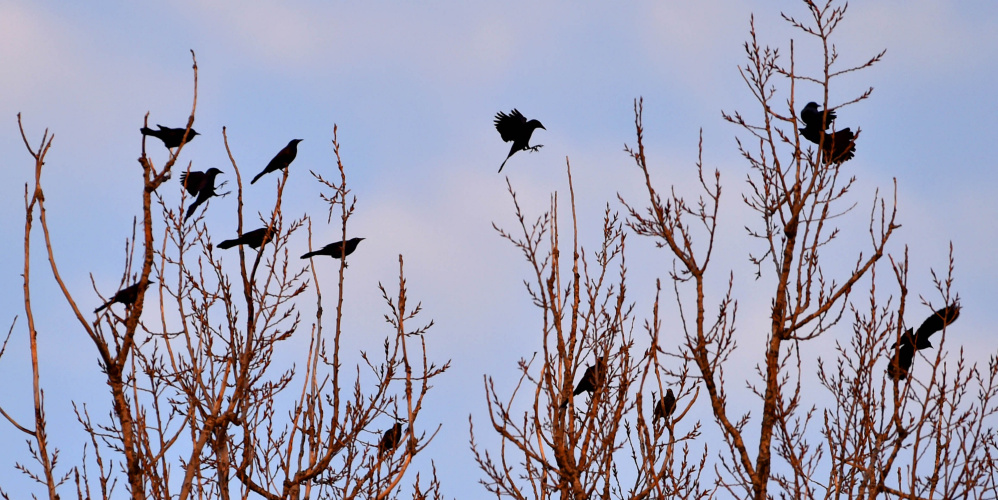
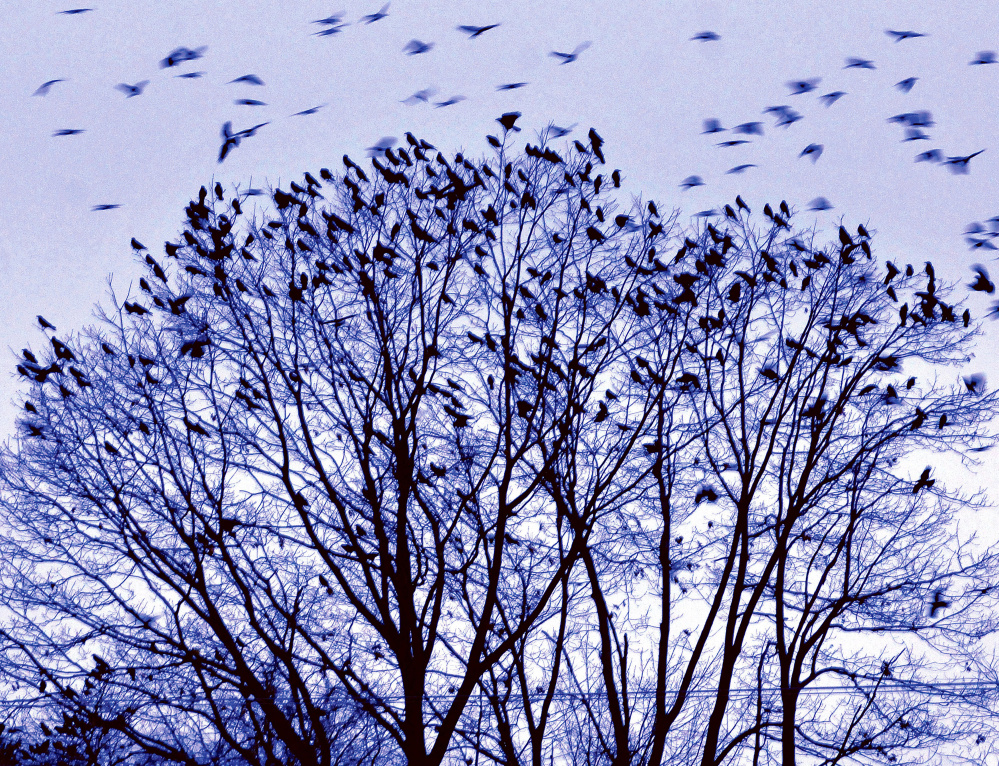
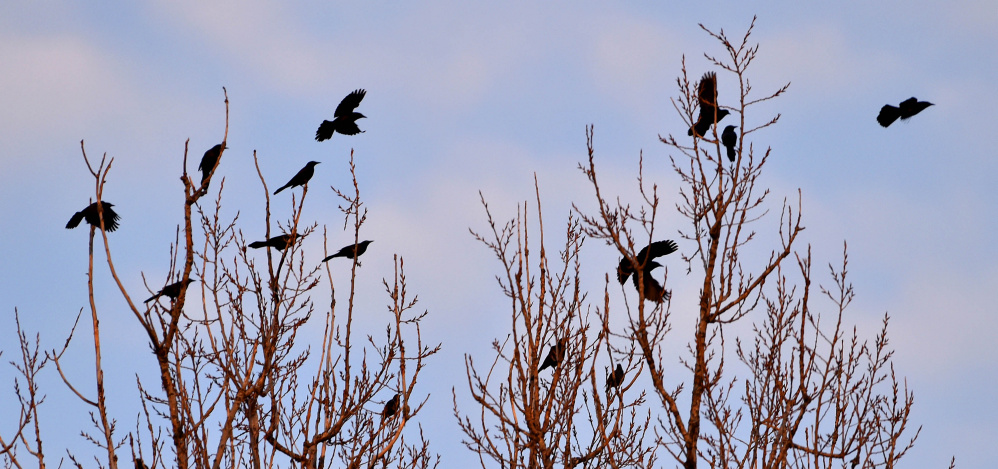
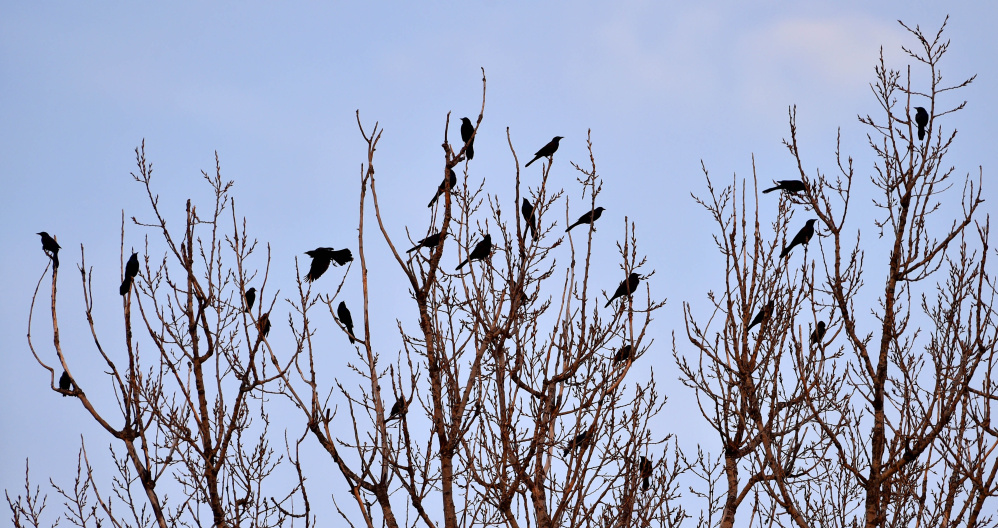
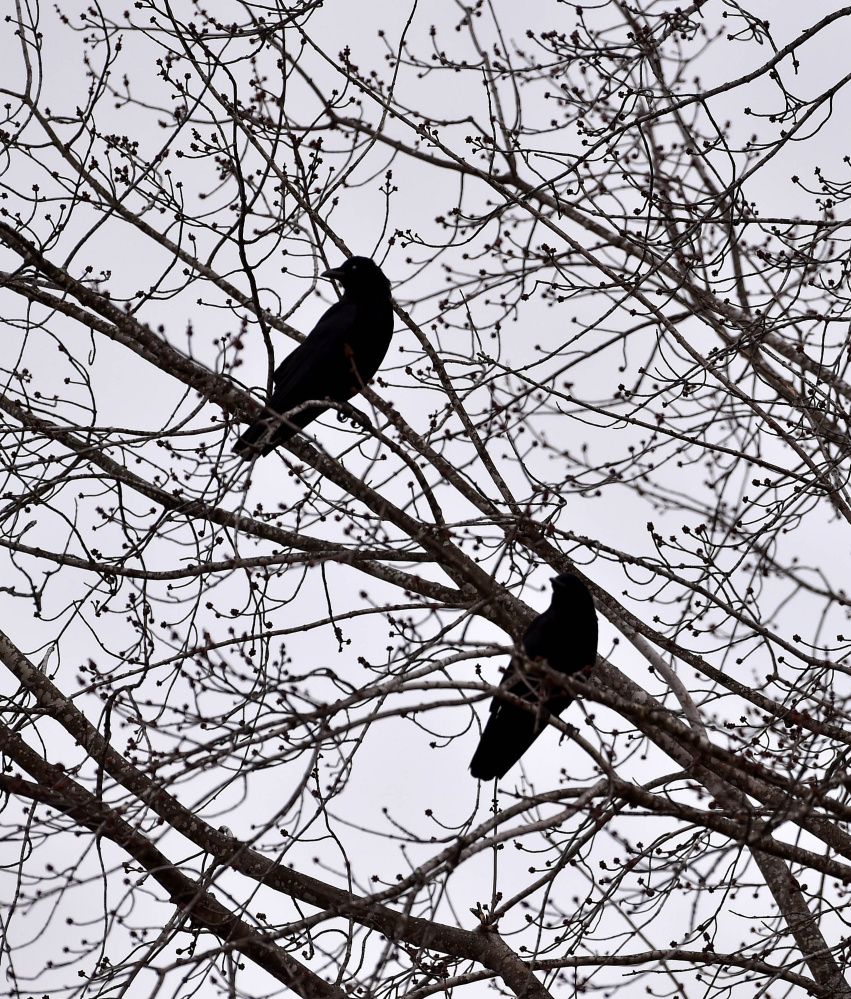
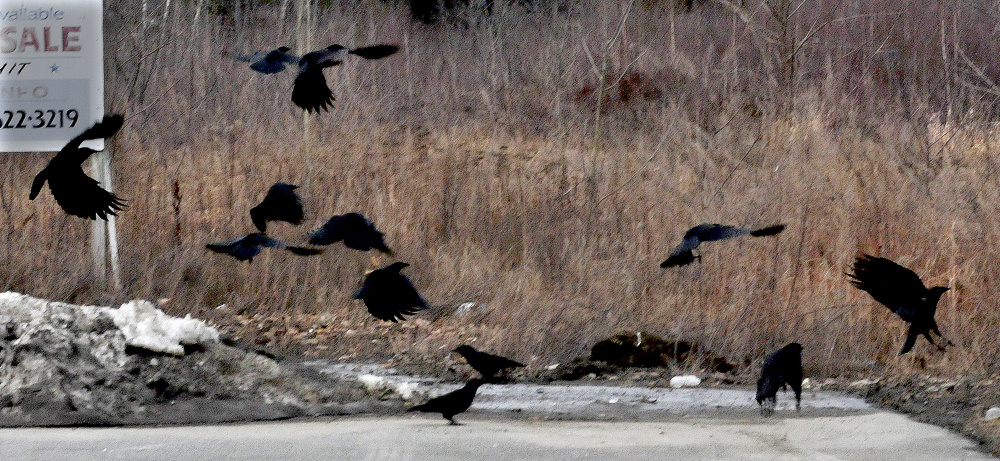

Success. Please wait for the page to reload. If the page does not reload within 5 seconds, please refresh the page.
Enter your email and password to access comments.
Hi, to comment on stories you must . This profile is in addition to your subscription and website login.
Already have a commenting profile? .
Invalid username/password.
Please check your email to confirm and complete your registration.
Only subscribers are eligible to post comments. Please subscribe or login first for digital access. Here’s why.
Use the form below to reset your password. When you've submitted your account email, we will send an email with a reset code.